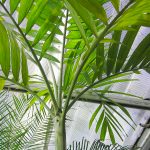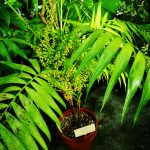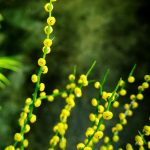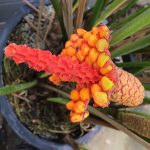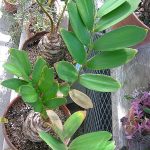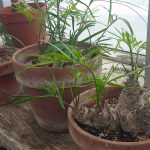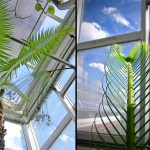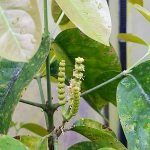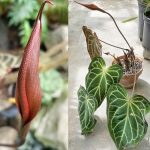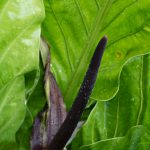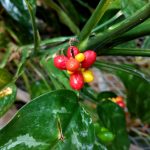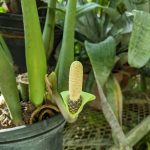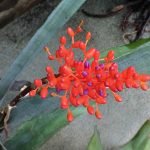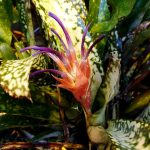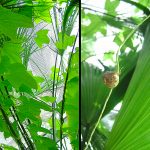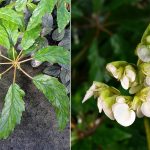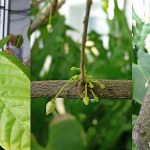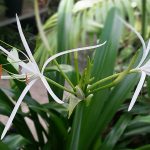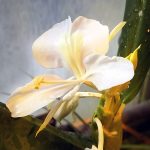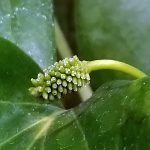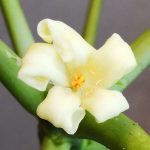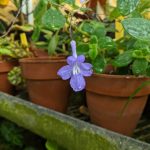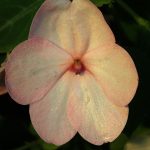PALM FAMILY
(Arecaceae)
Palms are emblematic of the warm moist tropics, and are almost unique among flowering plants in that they form large trees with sturdy, unbranched trunks (despite lacking true wood-forming secondary growth). Most striking are the gigantic corrugated leaves that provide a huge photosynthetic surface, yet remain mechanically strong.
CYCLANTHACEAE
CYCADS
(Cycadaceae, Zamiacaea)
Cycads are primitive non-flowering seed plants (gymnosperms) that flourished across much of the earth’s surface during the Triassic and Jurassic eras ~ 290 – 265 million years ago. Today, there are just ~ 150 species remaining in the tropics and subtropics of the Americas, Africa and Asia. They are distinguished by their palm-like appearance and cone-bearing separate sexes. They are slow-growing and resistant to drought. The stem pith is rich in carbohydrates and a staple crop in some region.
GNETUM
(Gnetaceae)
ARUM FAMILY
(Araceae)
Arums often have rhizomes or tubers. Flowers emerge on a spike-like receptacle called a spadix, accompanied by a modified leaf called a spathe.
BROMELIACEAE
OTHER HORTICULTURAL AND EDIBLE TROPICAL PLANTS



